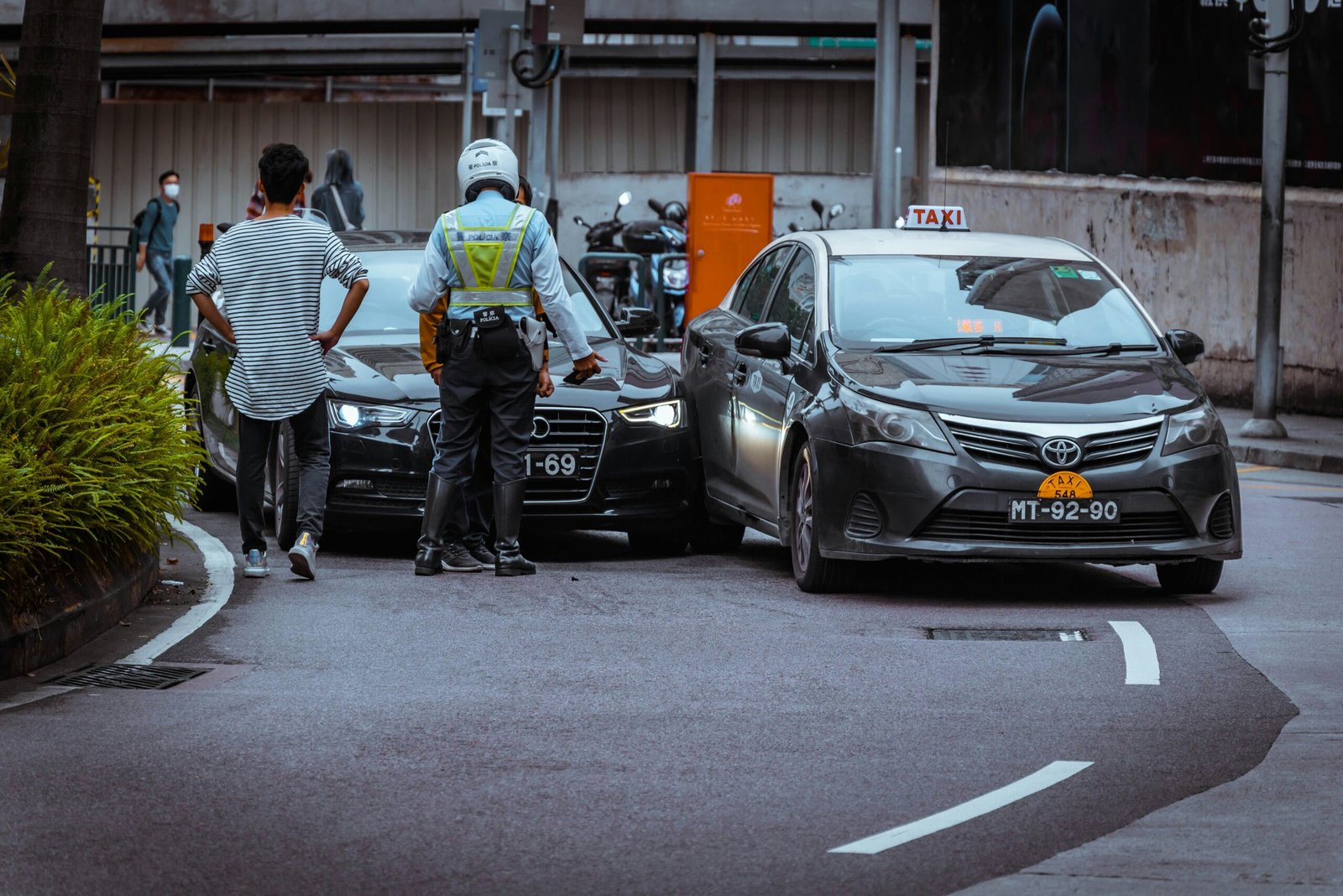A car accident can be anything from a minor inconvenience that makes you late for work, to a catastrophic event that will change your life forever. A car accident occurs in Harris County on average every 15 minutes. Chances are better than average that if you live, work or go to school in the Houston area, you will eventually get into a car accident. Preparing yourself for an accident before it happens can make the process go much smoother.
Stay calm
Don’t panic. Panic will only make a bad situation worse, so resist the instinct to give up. If you have children in the car with you, think about how they would perceive the situation if they saw their guards and protectors being torn apart. The last thing you need to deal with is for your children to panic at a time like this, so stay calm.
Evaluate injuries in your car
Assess everyone in your vehicle for injuries and call 911 if anyone needs immediate medical assistance. Time is crucial when it comes to traumatic injuries. The sooner you contact first responders, the greater the chances that those injured in your vehicle will recover. If you and your passengers are fine, your next thought is how to keep it that way.
The value of the accident location
To evaluate the accident scene, you will need to answer a few questions quickly.
Are you stuck in traffic? If your vehicle is drivable, the City of Houston asks that you “steer and pass.” According to Texas Transportation Code Chapter 550.022, if you are involved in a car accident on “the main lane, ramp, shoulder, median, or adjacent highway area in an urban area” without serious injury or death, the driver of each vehicle is required to remove the vehicle from the roadway.
Do you need to turn on the emergency flash? It is best to be careful and use emergency lights if your car is about to stop in a traffic lane or stop in the middle of the road.
Can you get out of the car safely? You want to make your car as visible as possible and make sure you are aware of all oncoming traffic before getting out of the car. An accident that could have been just a simple fender bender becomes a major accident when someone exits the vehicle when it is unsafe to do so and is struck by a pedestrian by an unsuspecting driver.
Evaluating injuries in other cars
If you can see other vehicles from your car after the accident, you may be able to tell if they also need emergency help. If the occupants of another vehicle are clearly in need of emergency medical assistance, contact first responders by calling 911. Remember, it is important for you to evaluate the injuries of the occupants of the other vehicles involved, but do not attempt to exit your vehicle and check on others unless you are sure that It is safe to do so.
Move to a safe area
If it is possible to move the vehicle to the side of the road, parking lot, roadside, or other safe area, it is best to do so as mentioned above. If any damaged vehicle cannot be moved, call the police or other emergency services, and move a safe distance from the scene until help arrives to remove the damaged vehicle from the scene.
Call the police
No matter how minor the damage, you should always notify the police so they can complete an accident report. The accident report is an important document for your insurance company and attorney if you go to court. About 50% of drivers in the Houston area have no insurance, have expired insurance, have fake insurance, or are excluded from the policy they may show you at the scene of an accident. Additionally, people often change their stories when they talk to your insurance company after an accident, and there are no specific records to refer to. Obtaining an accident report will help your insurance company determine who is responsible for the accident and get an accurate version of what happened.
Take pictures! Take pictures! Takes a lot of pictures!
Use your smartphone to take pictures of everything related to the accident scene including:
Damage to your car. Make sure to take photos from different angles.
Damage to other vehicles involved in the accident. This is important for claims information because your insurance company may ask you to do so.
Driver’s license and other driving insurance card.
Take pictures of the intersection or the accident site itself. These pictures will help
me to the side of the road or a safe location to avoid obstructing traffic and further accidents. Turn on your hazard lights to alert other drivers of the situation. If your car is immobile, ensure that you and your passengers are safely away from the road and out of harm’s way.
3. Contact the Authorities
Call the police or local law enforcement to report the accident, especially if there are injuries, significant property damage, or disputes between parties. Cooperate with the authorities and provide them with accurate information about the accident. Request a copy of the police report for your records, as it may be required for insurance claims.
4. Gather Information
Exchange information with the other party involved in the accident, including their name, contact details, driver’s license number, and insurance information. If there are any witnesses, obtain their contact information as well. Take photos of the accident scene, including the vehicles involved, the surrounding area, and any visible damages.
5. Notify Your Insurance Company
Report the accident to your insurance company as soon as possible. Provide them with accurate and detailed information about the accident, including the date, time, location, and a description of what happened. Follow their instructions regarding the claims process and any documentation required.
6. Seek Legal Advice
If you believe you may be entitled to compensation for your injuries or property damage, it’s advisable to consult with a personal injury attorney. They can guide you through the legal process, protect your rights, and help you navigate any complexities that may arise.
7. Document the Accident
Keep a record of all documents and communications related to the accident, including medical bills, repair estimates, and correspondence with insurance companies or legal representatives. This documentation will be crucial in supporting your claims and ensuring a fair resolution.
8. Take Care of Yourself
Dealing with the aftermath of an auto accident can be physically and emotionally draining. Take care of yourself by seeking any necessary medical treatment, attending therapy if needed, and reaching out to a support network of family and friends. Remember that healing takes time, both physically and emotionally.

